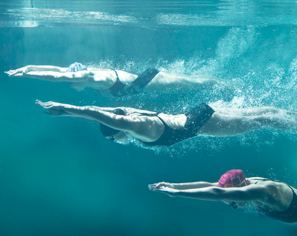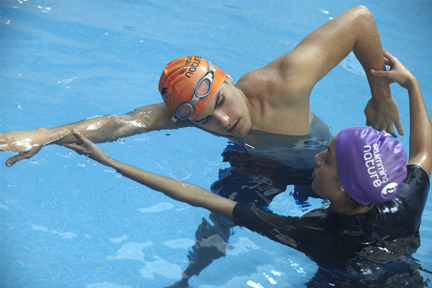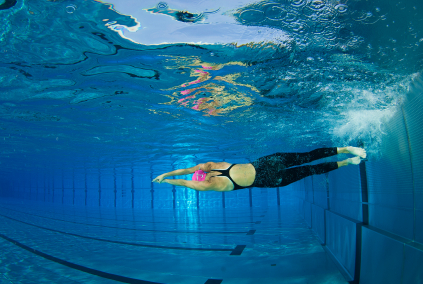Welcome to Swimming Nature’s first Blog of 2014!
This is Part 3 of our Myth Busting series. Myth 1 and Myth 2 are both brilliant reads in case you missed them!
After my first swim of the New Year I was approached by a club member who had been watching me and wondered if I could give him a few technique tips. His dilemma was that, due to a shoulder injury, he couldn’t do his usual weight sessions in the gym so he wanted to try to improve his swimming as part of his recovery and to maintain fitness. The main thing putting him off was that every time he tried to swim he sank like a lead weight!
Myth #3 The Sinker
It takes time to adapt to the aquatic environment and learn to work with water, as opposed to thrashing your way through it. Swimmers often call this developing ‘feel’ for the water. Swimming is also a resistance exercise, similar to weight lifting, but places almost no stress on your joints and bones. So not only does swimming work your muscles but it doesn’t have some of the negative impacts that lifting weights can have.
Having worked with numerous Adult swimmers and multi sport athletes who struggle with this concept, one thought always enters my mind when people say they can’t float, Relax!
Don’t fight the water, learn to relax and let it do most of the work for you.
I explained to the guy that because body type has a lot to do with your buoyancy most world class swimmers could be classified as “sinkers” because they are leaner, muscly individuals, which makes them less buoyant. But it really doesn’t matter; anyone can be a good swimmer, or even just a floater.
Buoyancy is best achieved by relaxing, controlled breathing and adopting a body position that will allow you to take full advantage of the waters properties. Everyone can float but some people need more time and practice getting used to their natural position in the water and learning how to control it. Raising the arms closer to the head helps to redistribute the weight and is a better floating position than the common ‘T’ shape. Slow, gentle kicking will also help as it raises the legs closer to the surface of the water. So I advised him to try this on his own but also it’s worth looking into some lessons to help get him started.
What aspects of you swimming are you struggling to get to grips with in 2014? Take a look at our programmes if you are feeling a bit rusty!

 LOG IN
LOG IN
 CONTACT US
CONTACT US







